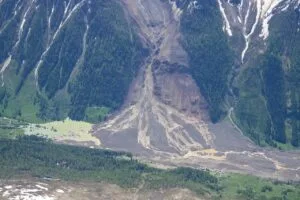Abstract/Description
The increasing frequency and intensity of windthrow events pose significant ecological, economic, and social challenges. A notable example
is storm Vaia (2018), which devastated over 42,500 ha of forest across Trentino Alto Adige, Veneto, Friuli Venezia Giulia, Lombardy,
and, to a lesser extent, Piedmont and Valle d’Aosta, with an estimated 16.5 million m³ of fallen trees. Understanding post-disturbance
forest recovery is crucial for guiding management strategies that promote resilient restoration. This study examines post-Vaia
vegetation dynamics by integrating earth observation data and field monitoring to assess regeneration trajectories. During summer
2021, field data were collected from 32 transects in affected areas of South Tyrol using a standardized protocol. The survey covered
edge forest structure, dead wood presence, and ground cover. To assess vegetation dynamics remotely, we used the Normalized Difference
Vegetation Index (NDVI) from Sentinel-2 (2016-2024) and land surface temperature (LST) from ECOSTRESS (2018-2024). Time series
analysis grouped sites based on similar recovery trajectories. Additional data from field surveys, topography, climate, and salvage
logging were integrated into a Multifactorial Analysis (MFA) to explain observed temporal patterns. The analysis identified three distinct
recovery trajectories, primarily influenced by topography, temperature, and precipitation. The pronounced seasonality in two recovery
groups suggested successional stages dominated by grasses and herbs, with limited tree regeneration, indicating slow forest recovery.
Although harvesting strategies are often guided by topography, different methods affect soil conditions and subsequent vegetation
growth. While NDVI and LST effectively captured broad recovery trends, they had limitations in detecting species-specific regeneration
and site diversity, underscoring the need for supplementary data. Our findings highlight the importance of integrating earth observations
with ground-based surveys to assess post-windthrow recovery and inform forest management. Understanding how stand characteristics
and salvage logging influence regeneration is key to optimizing intervention strategies in mountain forests. These insights support
decision-making for resilient forest restoration. Future research should expand monitoring efforts to neighbouring regions and incorporate
species-specific analyses to refine post-disturbance management.


